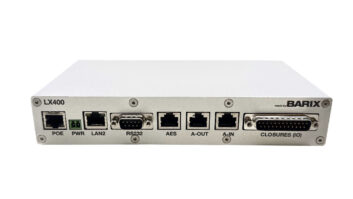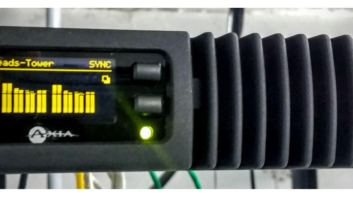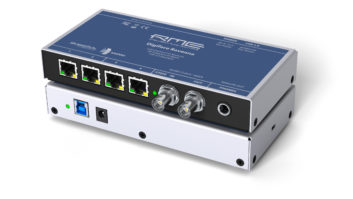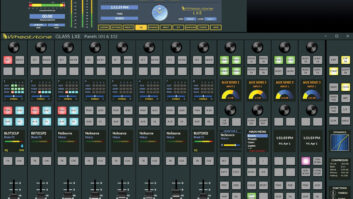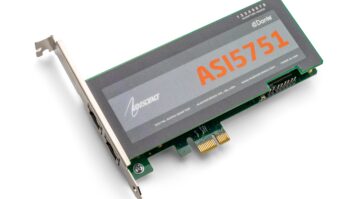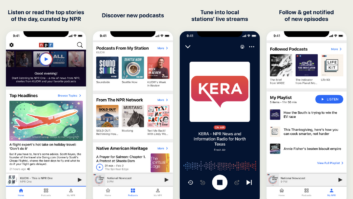Keyur Parikh is the vice president of engineering for GatesAir, responsible for the leadership of product design, new technology strategy and quality management. He previously was VP and GM of the company’s Intraplex Product Group. This is excerpted from the ebook “The Evolution of AoIP.”
Radio World: Keyur, how you would characterize the role of AoIP in radio plants today?
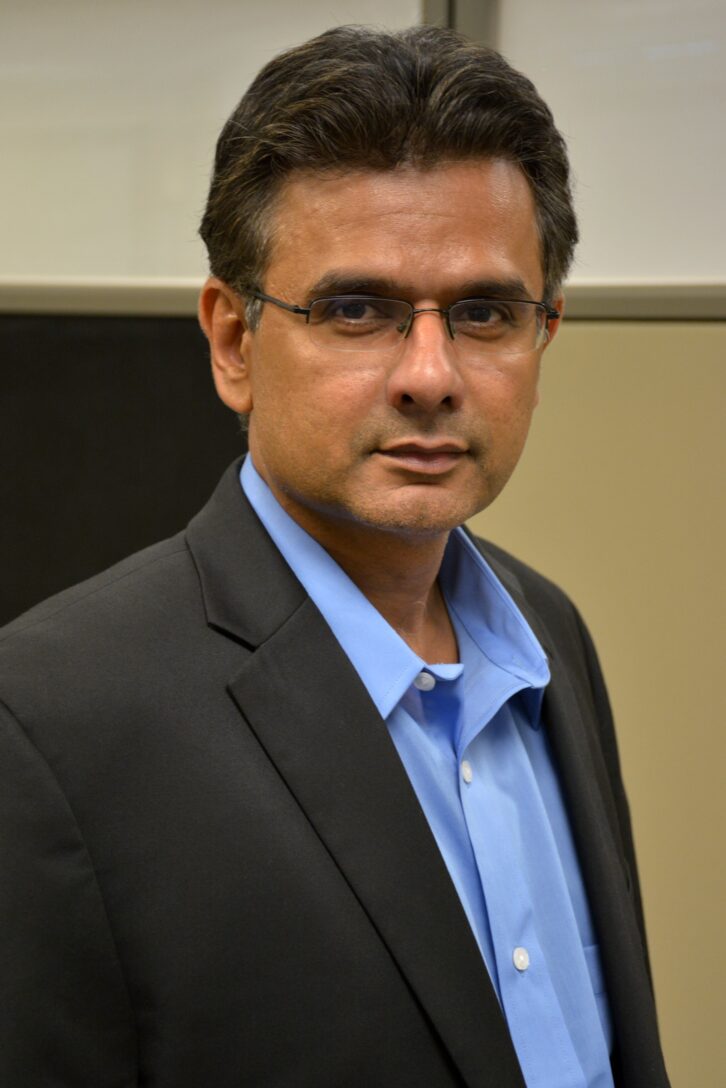
Keyur Parikh: It’s diverse in application, a technology being used in studios as well as for wide-area contribution distribution, which is where our products play.
In the studio environment, penetration is pretty widespread. It’s still homogeneous — in the U.S. you are either a Livewire or a WheatNet house. Ravenna is there too, though not as much. Internationally we see a lot more Ravenna and Dante. But even though we don’t participate in the studio equipment aspect, we’ve seen significant penetration of AoIP there.
On the wide-area network side, most of the telcos are shutting off their T1 lines, so that area has taken off significantly over the last few years. Whether you talk about wired connections — cable, DSL or fiber — or terrestrial microwave or satellite, they are all using IP-based transport.
Wide-area IP transport use is widespread, and having our codecs support Livewire, WheatNet and AES-67 interface makes it easier for our products to be integrated into an end-to-end workflow from studio to transmitter.
RW: Do you find that most engineers now are well up to speed with this somewhat complex topic?
Parikh: We’ve seen the knowledge base expand over the last few years, especially among big radio groups, which have very knowledgeable IT and networking folks.
For smaller radio stations it can be challenging because you need somebody who understands networking and IT as well as broadcasting. It can be hard to find those personnel. But overall, we have seen significant expansion of skillset in IP networking technology. Some in fact are using SD-WAN technology to take advantage of diverse IP transport paths.
RW: Has AoIP matured? There was a period for eight or 10 years when it seemed to be changing very quickly, including the standards conversations.
Parikh: The standardization and interoperability discussion has gone on for several years now. Codecs are interoperable at media level with EBU standardization.
But there is now a trend to reduce cap-ex and op-ex. AoIP is just one of the technology in the platform. We’ve always looked at it this way: AoIP is one of the functions that our platforms perform. We are a full-featured media gateway and are integrating more and more functionality within this platform. We now support 10-band audio processing.
Our Dynamic Stream Splicing technology within the media gateway can reliably transport various other media over IP. For example, it can transport MPX over IP, HD Radio’s E2X streams and, on the TV side, it can transport ATSC 3.0. Because our platform is heavily software-based, we can add more functionality quite easily.
We’ve also seen a push in radio to reduce the number of physical elements at the transmitter site. You’ll see more and more radio transmitters with built-in full-featured AoIP functionality so there’s one less box. In the past year or so we introduced our plug-in card, the IP Link 100e, a full-featured AoIP STL codec module for Flexiva transmitters that supports SRT and Dynamic Stream Splicing for reliability and security along with 10-band audio processing
Also new is the Intraplex IP Link 100n, which is a full-duplex, single stereo channel codec for simultaneous reception and transmission of audio over IP streams in STL, STS and other networking applications for radio and streaming.
RW: Is any of this capacity or functionality being paid for on a monthly fee basis?
Parikh: No, it’s not being offered “as a service.” We sell any added capabilities via software feature keys. The base platform comes with basic functionalities of AoIP that you need; then the 10-band audio processing or advanced reliability or security features are add-on capabilities.
RW: Do these functions translate well to the cloud?
Parikh: Yes, in fact a few years ago we introduced a platform called Ascent. It’s a software platform that supports multiple channels of audio, up to 32 stereo channels in and out, and our IP gateway functionality. We use it not just for audio encoding and decoding but as an IP media gateway that can reliably transport ATSC 3 signals to multiple destinations. It’s a pure software platform, and your audio or media ingest and egress is all via IP also, so it lends itself to running as a software application on a COTS platform and also on a virtualized platform in the cloud.
A few of our major customers are running Ascent in a cloud as a replacement for C-band satellite distribution. We will continue to see more of these use cases, a software product that can be placed in the CDN cloud.
RW: Is there a GatesAir philosophy for AoIP?
Parikh: Again it’s that AoIP is one of the technology features of our media IP gateway platform.
We introduced the first models of IP Link codecs in 2012 and 2013, focused on wide-area, contribution and distribution. We focused on transport reliability and security from the beginning, with a built-in firewall and our Dynamic Stream Splicing technology, which can use multiple network interfaces to provide seamless failover.
Recently, we included SRT, or Secure Reliable Transport, overlaid on top of our Dynamic Stream Splicing to enhance reliability and security.
The network layer capabilities that we have built in to our platform enable other IP-based real-time media packets to be reliably transported as well. For instance, we can take the HD Radio’s E2X packet stream or ATSC1 or ATSC3 packet streams and tunnel them into our own protocol and reliably send it for point-to-multipoint distribution. In public safety applications, we use the same philosophy and platform to reliably transport mission-critical voice and data signals.
You can see the current Intraplex line on our website.
RW: Earlier you mentioned interoperability; does it come up as an issue in what you’re doing?
Parikh: We support the EBU standard on the audio side; we are able to decode signals from other codec vendors, and our signals can be decoded at the audio level by other vendors as well.
The problem arises with signaling protocols such as SIP. Interoperability at that level is not where it needs to be, but we don’t really see a lot of requirements for SIP. The interoperability requirements we typically come across are at the media level, which is well-defined in the RFCs that the EBU standard specifies.
RW: What is the most common question or obstacle you encounter?
Parikh: Each situation is different. People generally ask how much bandwidth they need. We ask, “How much can you get?” Today’s codecs have different ways of encoding audio, and with the state-of-the-art encoding algorithms like Opus and HE-AAC, we can get to very low bit rates.
The question should really be how much bandwidth you think you can afford on a monthly basis. Then we can work from that angle to configure the codec not just for algorithm to use, but also for overhead we can afford for packet loss protection.
So it’s important to understand the network topology and your operational budget.
RW: And what about that issue of security?
Parikh: The number one concern when you migrate to an all-IP environment, whether it’s in the studio or on the WAN side, is security. We’ve already seen some ransomware attacks. Standalone codecs are also vulnerable; you don’t typically get ransomware attacks on individual codecs, but denial of service attacks and people hacking in to play different content can happen. So on the codec side, it’s important for vendors to add capabilities to protect against these vulnerabilities.
RW: Has the sale of the company to Thomson changed anything for your part of the business?
Parikh: It has helped us because of the reach Thomson has internationally; our Intraplex products are being included in more proposals. Otherwise nothing has changed.
RW: Anything else we should know?
Parikh: Last year we introduced the 10-band audio processing in the platform. This year we introduced another integrated software capability within our platform, which allows users to monitor their feed to the transmitter site, with their smartphones. We send the received or off-air feeds to the cloud, where the server can record, generate events and alarms, which can be pushed to the user’s smartphones, allowing them to monitor multiple transmitter sites easily.





